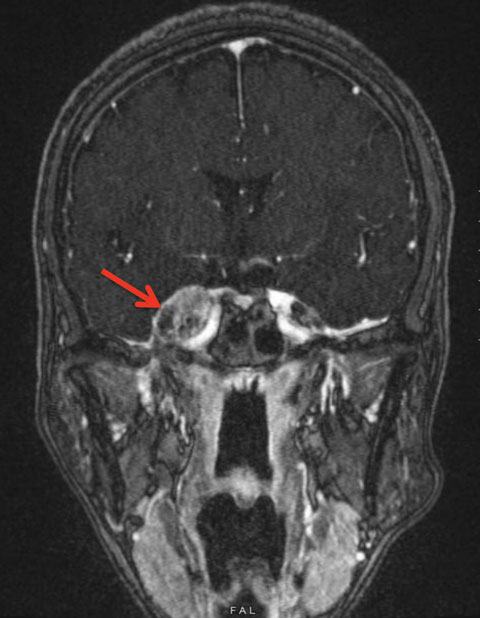 |
| Approximately 10% of isolated, acquired pediatric CN VI palsies are associated with a newly diagnosed brain tumor. Photo: Cecelia Koetting, OD. Click image to enlarge. |
Acquired sixth nerve (CN VI) palsies in children may be benign or associated with an underlying neurologic condition. In children who present with isolated (no associated neurologic or ophthalmic signs or symptoms) CN VI palsies, the rate of newly diagnosed neurologic disorders (such as tumors) is unclear. Moreover, the factors associated with spontaneous resolution and amblyopia in children with acquired CN VI palsies are unknown. Looking to change this, researchers recently found that approximately 10% of isolated, acquired pediatric CN VI palsies are associated with a newly diagnosed brain tumor.
The team retrospectively reviewed the charts of all children younger than 18 years old who were diagnosed with CN VI palsy at their institution from 2010 to 2020 (172 met inclusion criteria). They recorded ophthalmologic and neurologic history and examination findings, neuroimaging results, etiology of CN VI palsy and outcomes including spontaneous resolution and amblyopia. They then assessed the etiologies of isolated and nonisolated CN VI palsies, as well as the frequency and factors associated with spontaneous resolution and amblyopia.
Twenty CN VI palsies (12%) were isolated at presentation. Most isolated cases were presumed postviral or postvaccination (50%) or idiopathic (30%), but two (10%) were associated with newly diagnosed tumors. Spontaneous resolution occurred in 59% of CN VI palsies at a median of 12.3 weeks and was associated with older age and nontumor etiology. Amblyopia developed in 18% of children at risk, exclusively in those with anisometropia, pre-existing strabismus or who were younger than 12 months.
“This risk must be discussed with parents when considering immediate vs. delayed neuroimaging,” the study authors concluded. “In addition, infants and children with secondary amblyogenic risk factors (anisometropia or pre-existing strabismus) require close follow-up to monitor and treat amblyopia.”
Chang MY, Borchert MS. Etiology and outcomes of acquired pediatric sixth nerve palsies. J Neuroophthalmol. August 17, 2021. [Epub ahead of print]. |


